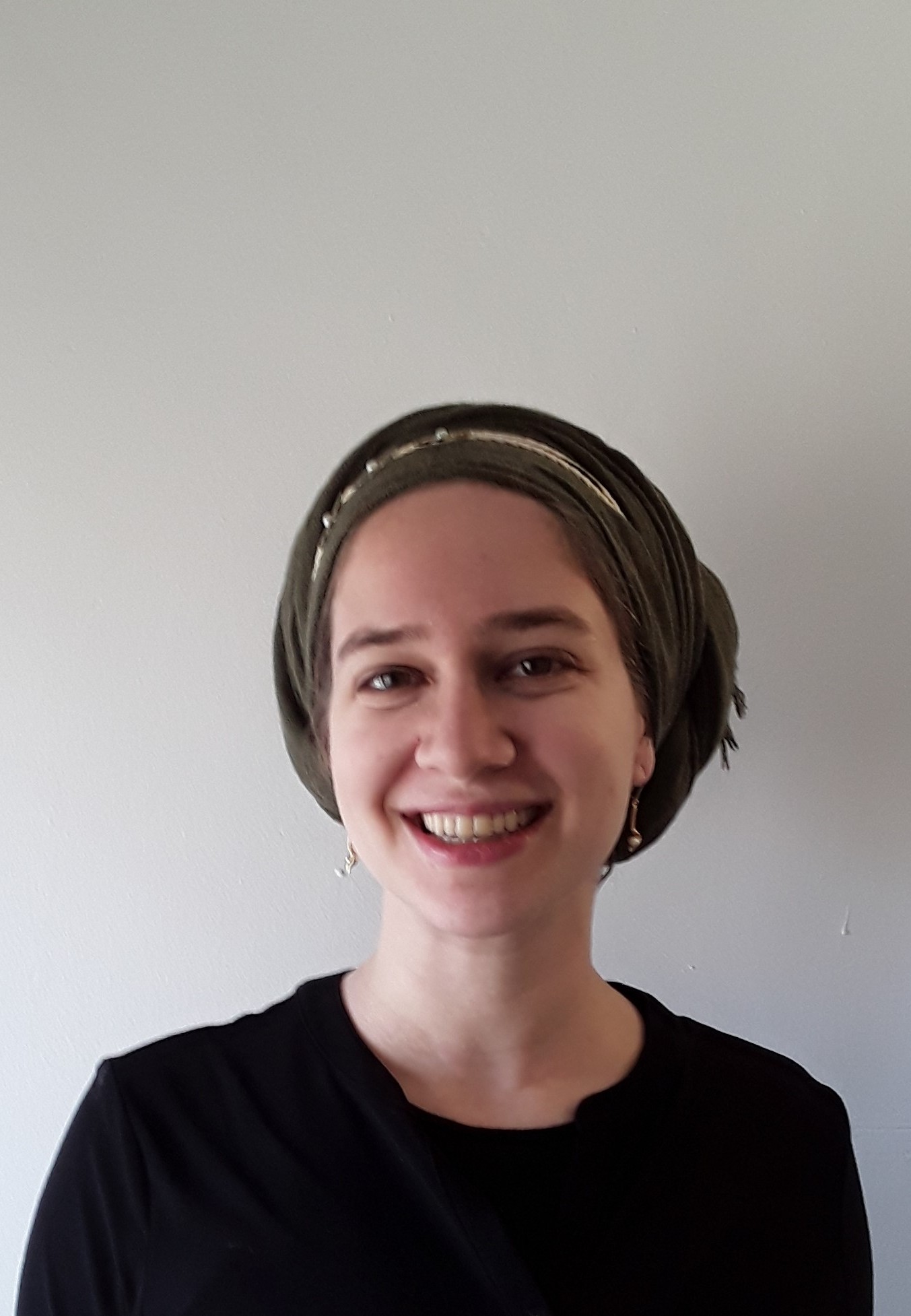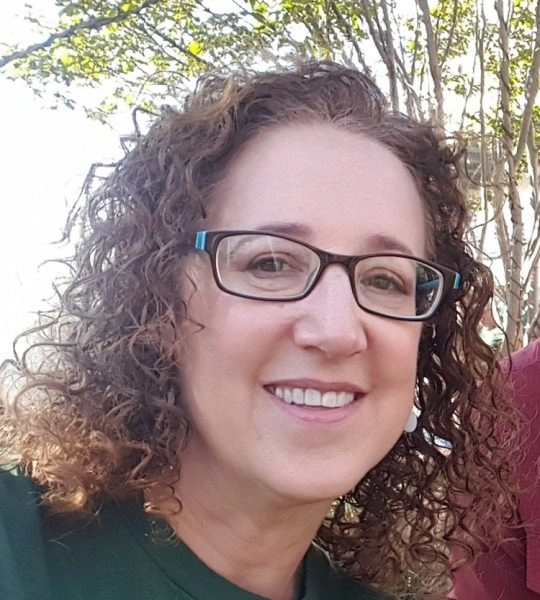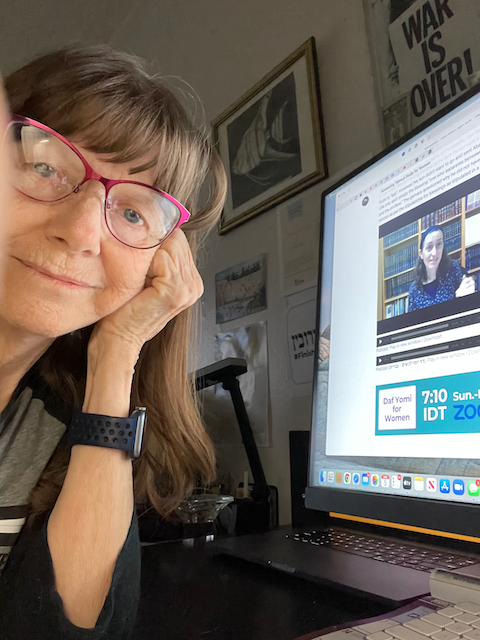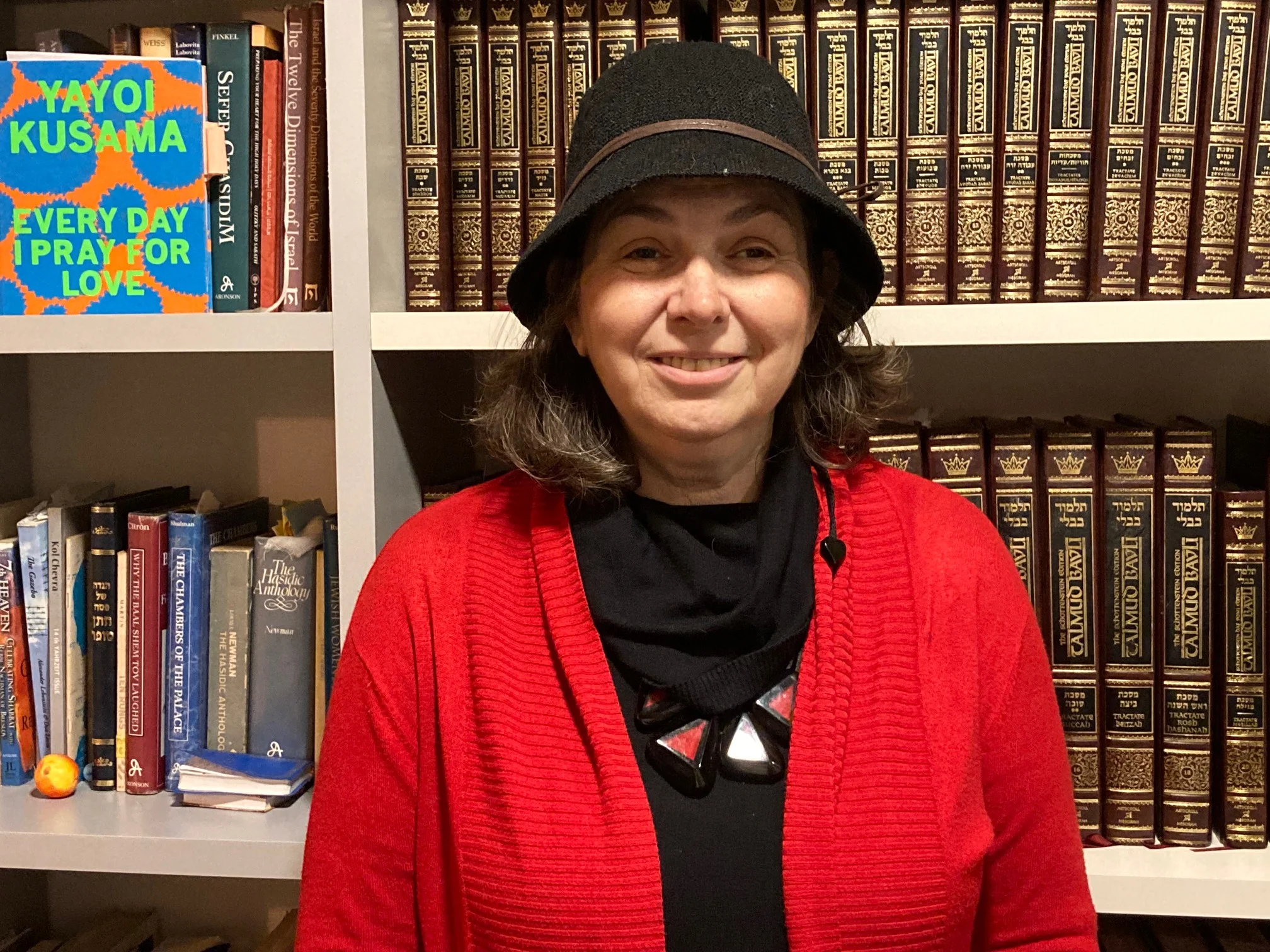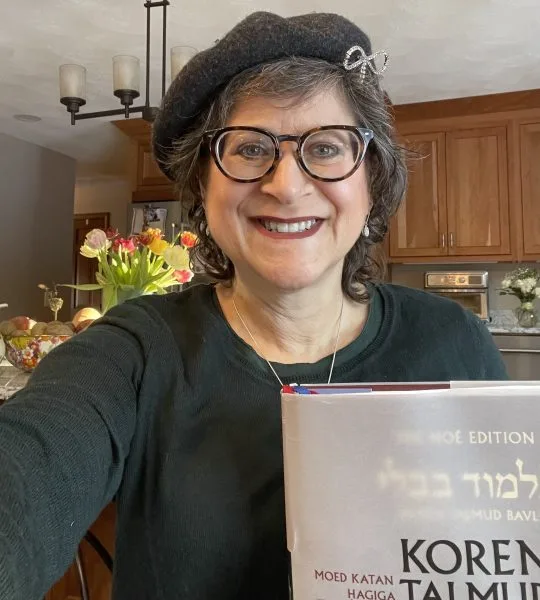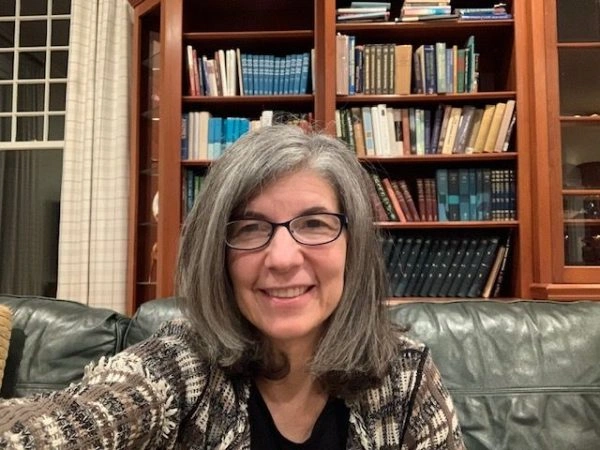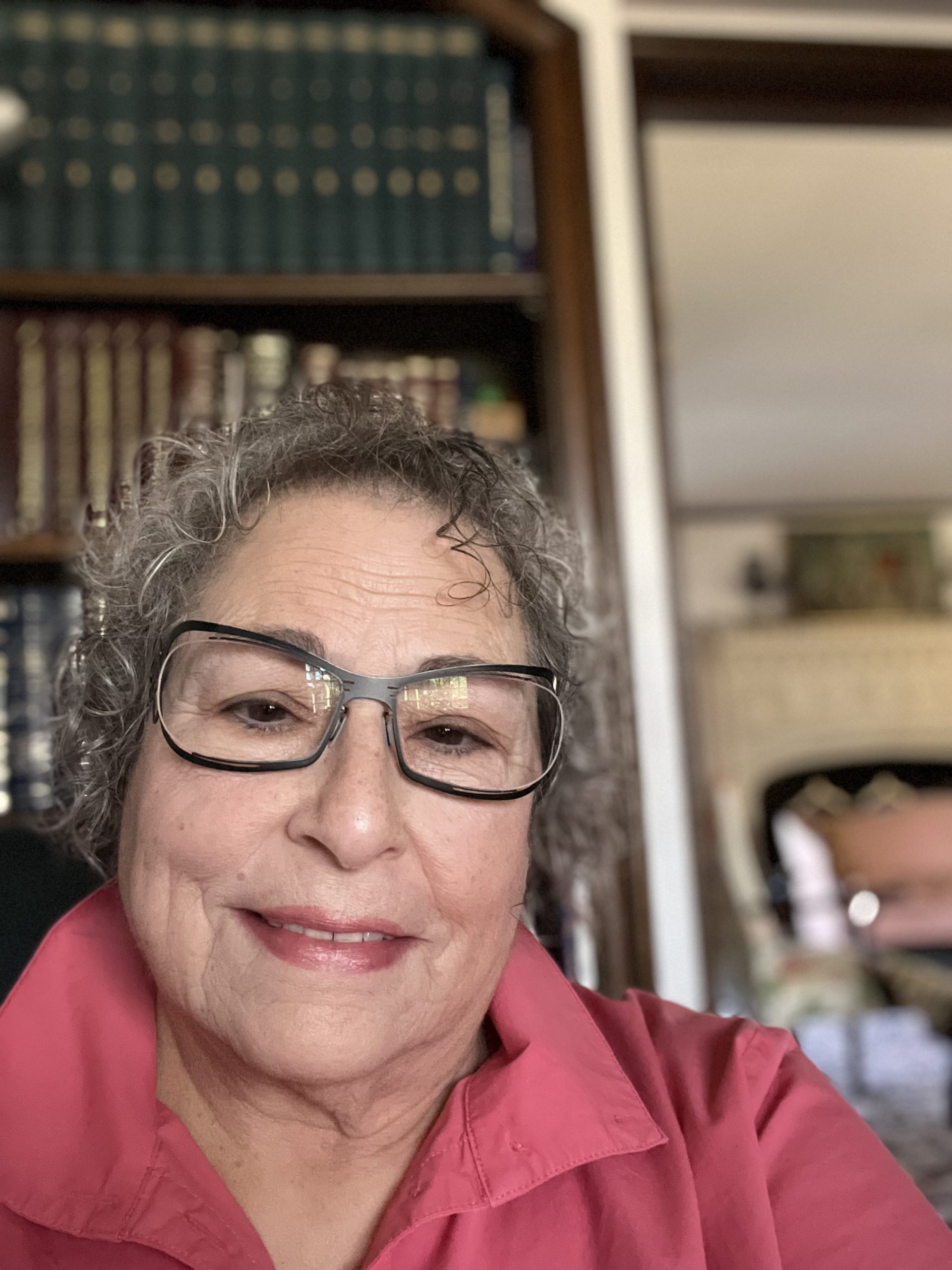Who is allowed to slaughter the animal for a sacrifice? The mishna words it in a way that sounds like it is only post facto allowed – however this contradicts another source which indicates it is permitted ab initio. The mishna also indicated that if an impure person slaughtered. it is allowed, however another source contradicts and seems to indicate it is not allowed. Ula explains that an impure person who even puts a bit of one’s body into the azara of the mikdash it is forbidden. A question is brought from a tannatic source against him and a potential proof is brought. Both are rejected.
This week’s learning is sponsored by Tina Lamm in loving memory of her father, Mr. Mike Senders, A”H, Yitzchak Meir ben HaRav Tzvi Aryeh v’Esther Bayla, on his shloshim. “Reaching the age of 101 was not only a personal milestone for my father, but also a testament to the fullness of his life. He used those years well – building Torah institutions, nurturing family and living in intimacy with Hakadosh Baruch Hu. יְהִי זִכְרוֹ בָּרוּךְ”
Masechet Zevachim
Masechet Zevachim is sponsored by Esther Kremer in loving memory of her father, Manny Gross on his third yahrzeit. “He exemplified a path of holiness and purity, living with kedushah in his everyday life.”
Want to dedicate learning? Get started here:
This week’s learning is sponsored by Tina Lamm in loving memory of her father, Mr. Mike Senders, A”H, Yitzchak Meir ben HaRav Tzvi Aryeh v’Esther Bayla, on his shloshim. “Reaching the age of 101 was not only a personal milestone for my father, but also a testament to the fullness of his life. He used those years well – building Torah institutions, nurturing family and living in intimacy with Hakadosh Baruch Hu. יְהִי זִכְרוֹ בָּרוּךְ”
Masechet Zevachim
Masechet Zevachim is sponsored by Esther Kremer in loving memory of her father, Manny Gross on his third yahrzeit. “He exemplified a path of holiness and purity, living with kedushah in his everyday life.”
Delve Deeper
Broaden your understanding of the topics on this daf with classes and podcasts from top women Talmud scholars.
New to Talmud?
Check out our resources designed to help you navigate a page of Talmud – and study at the pace, level and style that fits you.
The Hadran Women’s Tapestry
Meet the diverse women learning Gemara at Hadran and hear their stories.
Zevachim 32
וְכוּלָּן שֶׁקִּיבְּלוּ אֶת הַדָּם חוּץ לִזְמַנּוֹ וְחוּץ לִמְקוֹמוֹ – אִם יֵשׁ דַּם הַנֶּפֶשׁ, יַחְזוֹר הַכָּשֵׁר וִיקַבֵּל.
And with regard to all of them, in a case where they collected the blood with the intent to offer it beyond its designated time or outside its designated area, if there is blood of the soul that remains in the animal, the priest fit for Temple service should again collect the blood and sprinkle it on the altar.
קִיבֵּל הַכָּשֵׁר וְנָתַן לַפָּסוּל – יַחְזִיר לַכָּשֵׁר. קִיבֵּל בִּימִינוֹ וְנָתַן לִשְׂמֹאלוֹ – יַחְזִיר לִימִינוֹ. קִיבֵּל בִּכְלִי קֹדֶשׁ וְנָתַן לִכְלִי חוֹל – יַחְזִיר לִכְלֵי קֹדֶשׁ. נִשְׁפַּךְ מִן הַכְּלִי עַל הָרִצְפָּה וַאֲסָפוֹ – כָּשֵׁר.
If the priest fit for Temple service collected the blood in a vessel and gave the vessel to an unfit person, that person should return it to the fit priest. If the priest collected the blood in a vessel in his right hand and moved it to his left hand, he should return it to his right hand. If the priest collected the blood in a sacred vessel and placed it in a non-sacred vessel, he should return the blood to a sacred vessel. If the blood spilled from the vessel onto the floor and he gathered it from the floor, it is valid.
נְתָנוֹ עַל גַּבֵּי הַכֶּבֶשׁ; שֶׁלֹּא כְּנֶגֶד הַיְסוֹד; נָתַן אֶת הַנִּיתָּנִין לְמַטָּה – לְמַעְלָן; וְאֶת הַנִּיתָּנִין לְמַעְלָן – לְמַטָּה; וְאֶת הַנִּיתָּנִין בִּפְנִים – בַּחוּץ; וְאֶת הַנִּיתָּנִין בַּחוּץ – בִּפְנִים; אִם יֵשׁ דַּם הַנֶּפֶשׁ – יַחְזוֹר הַכָּשֵׁר וִיקַבֵּל.
If an unfit person placed the blood upon the ramp or on the wall of the altar that is not opposite the base of the altar, or if he placed the blood that is to be placed below the red line above the red line, or if he placed the blood that is to be placed above the red line below the red line, or if he placed the blood that is to be placed inside the Sanctuary outside the Sanctuary or the blood that is to be placed outside the Sanctuary inside the Sanctuary, then if there is blood of the soul that remains in the animal, the priest fit for Temple service should again collect the blood and sprinkle it on the altar.
גְּמָ׳ ״שָׁחֲטוּ״ – דִּיעֲבַד אִין, לְכַתְּחִלָּה לָא.
GEMARA: The Gemara infers from the use of the past tense in the mishna: With regard to all those who are unfit for Temple service who slaughtered, that after the fact, yes, the slaughter is valid. But ab initio, no, those who are unfit may not slaughter an offering.
וּרְמִינְהוּ: ״וְשָׁחַט״ – שְׁחִיטָה בְּזָר כְּשֵׁרָה, שֶׁהַשְּׁחִיטָה כְּשֵׁרָה בְּזָרִים וּבְנָשִׁים וּבַעֲבָדִים וּבִטְמֵאִים. וַאֲפִילּוּ בְּקׇדְשֵׁי קָדָשִׁים. אוֹ אֵינוֹ אֶלָּא בַּכֹּהֲנִים?
And the Gemara raises a contradiction from what was taught in the halakhic midrash Torat Kohanim: The verse states with regard to a burnt offering: “And he shall slaughter the bull before the Lord” (Leviticus 1:5). The fact that the verse does not stipulate that a priest must slaughter the offering teaches that slaughter is valid if performed by a non-priest, as stated in the mishna: As the sacrificial rite of slaughter is valid when performed by non-priests, by women, by Canaanite slaves, and by ritually impure individuals, and even with regard to offerings of the most sacred order. Or perhaps the term “and he shall slaughter” in the verse is referring only to slaughter by priests?
אָמַרְתָּ: וְכִי מֵאַיִן בָּאתָה – מִכְּלָל שֶׁנֶּאֱמַר: ״וְאַתָּה וּבָנֶיךָ אִתְּךָ תִּשְׁמְרוּ אֶת כְּהֻנַּתְכֶם לְכׇל דְּבַר הַמִּזְבֵּחַ״;
You can say in response: From where did you come to the idea that the verse is referring only to a priest? It is from the fact that it is stated to Aaron: “And you and your sons with you shall keep your priesthood in everything that pertains to the altar” (Numbers 18:7).
יָכוֹל אַף בִּשְׁחִיטָה? תַּלְמוּד לוֹמַר: ״וְשָׁחַט אֶת בֶּן הַבָּקָר לִפְנֵי ה׳ וְהִקְרִיבוּ וְגוֹ׳״ – מִקַּבָּלָה וְאֵילָךְ מִצְוַת כְּהוּנָּה; לִימֵּד עַל הַשְּׁחִיטָה שֶׁכְּשֵׁרָה בְּכׇל אָדָם.
One might have thought that this is the halakha even with regard to slaughter, that only priests are fit to slaughter an offering. Therefore, the verse states: “And he shall slaughter the bull before the Lord, and Aaron’s sons, the priests, shall present [vehikrivu] the blood” (Leviticus 1:5), from which it is inferred that specifically from the collection of the blood and onward it is a mitzva exclusively of the priesthood. This teaches about the rite of slaughter that it is valid ab initio if performed by any person. This contradicts the inference from the mishna that slaughter of an offering by a non-priest is valid only after the fact.
הוּא הַדִּין דַּאֲפִילּוּ לְכַתְּחִילָּה נָמֵי; וּמִשּׁוּם דְּקָא בָּעֵי לְמִיתְנָא טְמֵאִים – דִּלְכַתְּחִילָּה לָא, גְּזֵירָה שֶׁמָּא יִגְּעוּ בַּבָּשָׂר; תְּנָא: ״שֶׁשָּׁחֲטוּ״.
The Gemara answers: The same is true that even ab initio as well it is permitted for those unfit for Temple service to slaughter an offering, but because the mishna wants to teach with regard to the ritually impure that they may not slaughter an offering ab initio due to a rabbinic decree lest they touch the flesh and render it ritually impure, therefore the mishna taught this halakha with the expression in the past tense: Who slaughtered, i.e., after the fact.
וְטָמֵא דִּיעֲבַד שַׁפִּיר דָּמֵי?! וּרְמִינְהוּ: ״וְסָמַךְ… וְשָׁחַט״ – מָה סְמִיכָה בִּטְהוֹרִים, אַף שְׁחִיטָה בִּטְהוֹרִים! מִדְּרַבָּנַן.
The Gemara asks: And in the case of a ritually impure individual who performed the slaughter, is it permitted even after the fact? And one can raise a contradiction from what is taught in the halakhic midrash: The Torah states two consecutive directives: “And he shall place his hand upon the head of the burnt offering…And he shall slaughter the bull before the Lord” (Leviticus 1:4–5). This juxtaposition indicates that both directives are referring to the same individual, which teaches that just as placing hands on the head of an offering may be performed only by ritually pure individuals, so too, the slaughter may be performed only by ritually pure individuals. The Gemara answers: By rabbinic law, an impure person is prohibited from slaughtering an offering lest he touch the flesh of the offering, but by Torah law the slaughter is valid.
מַאי שְׁנָא סְמִיכָה, דִּכְתִיב: ״לִפְנֵי ה׳״; שְׁחִיטָה נָמֵי, הָכְתִיב: ״לִפְנֵי ה׳״! אֶפְשָׁר דְּעָבֵיד סַכִּין אֲרוּכָּה וְשָׁחֵיט.
The Gemara asks: What is different about placing hands that it can be performed only by those who are ritually pure even by Torah law? It is that it is written: “Before the Lord,” which is referring to the Temple courtyard, and an impure person may not enter the Temple courtyard. With regard to slaughter as well, isn’t it written: “Before the Lord” (Leviticus 1:5)? How can a ritually impure person enter the Temple courtyard to slaughter an offering? The Gemara answers: It is possible, in a case where he fashions a long knife, stands outside the Temple courtyard, and slaughters the offering that is inside the courtyard.
סְמִיכָה נָמֵי – אֶפְשָׁר דִּמְעַיֵּיל יְדֵיהּ וְסָמֵיךְ. קָסָבַר בִּיאָה בְּמִקְצָת שְׁמָהּ בִּיאָה.
The Gemara asks: With regard to placing hands also, it is possible, in a case where he inserts his hands into the Temple courtyard and places them on the head of the offering. The Gemara answers: The tanna holds that a partial entry, in which only a part of the body enters the Temple courtyard, is called entry. Therefore, an impure individual may not insert even part of his body, such as his hands, into the Temple courtyard.
רַב חִסְדָּא מַתְנִי אִיפְּכָא: ״וְסָמַךְ… וְשָׁחַט״ – מָה שְׁחִיטָה בִּטְהוֹרִין, אַף סְמִיכָה בִּטְהוֹרִין. מַאי שְׁנָא שְׁחִיטָה? דִּכְתִיב: ״לִפְנֵי ה׳״,
Rav Ḥisda taught the baraita in the opposite manner: “And he shall place his hand upon the head of the burnt offering…and he shall slaughter the bull” (Leviticus 1:4–5), teaches that just as slaughter may be performed only by ritually pure individuals, so too, placing hands may be performed only by ritually pure individuals. The Gemara asks: What is different about slaughter that it may be performed only by those who are ritually pure? It is that it is written with regard to it: “Before the Lord,” which refers to the Temple courtyard, and a ritually impure person may not enter the Temple courtyard.
סְמִיכָה נָמֵי כְּתִיב: ״לִפְנֵי ה׳״! אֶפְשָׁר דִּמְעַיֵּיל יְדֵיהּ וְסָמֵיךְ. שְׁחִיטָה נָמֵי אֶפְשָׁר דְּעָבֵיד סַכִּין אֲרוּכָּה וְשָׁחֵיט!
With regard to placing hands on the head of an offering as well, it is written: “Before the Lord.” The Gemara answers that it is possible, in a case where he inserts his hands into the Temple courtyard and places them on the head of the offering while he remains outside. The Gemara asks: But with regard to slaughter also, it is possible, in a case where he fashions a long knife and slaughters the animal while standing outside the Temple courtyard.
הָא מַנִּי – שִׁמְעוֹן הַתִּימְנִי הִיא. דְּתַנְיָא: ״וְשָׁחַט אֶת בֶּן הַבָּקָר לִפְנֵי ה׳״ – וְלֹא הַשּׁוֹחֵט לִפְנֵי ה׳. שִׁמְעוֹן הַתִּימְנִי אוֹמֵר: מִנַּיִן שֶׁיִּהְיוּ יָדָיו שֶׁל שׁוֹחֵט לִפְנִים מִן הַנִּשְׁחָט? תַּלְמוּד לוֹמַר: ״וְשָׁחַט אֶת בֶּן הַבָּקָר לִפְנֵי ה׳״ – שׁוֹחֵט אֶת בֶּן הַבָּקָר יְהֵא לִפְנֵי ה׳.
The Gemara answers: In accordance with whose opinion is this? It is in accordance with the opinion of Shimon HaTimni, who holds that the one who slaughters an offering must stand inside the Temple courtyard. This is as it is taught in a baraita, that when the verse states: “And he shall slaughter the bull before the Lord” (Leviticus 1:5),it teaches that the bull must be inside the Temple courtyard, but the slaughterer need not be “before the Lord.” Therefore, he may stand outside the Temple courtyard and slaughter the offering that is inside. Shimon HaTimni says: From where is it derived that the hands of the slaughterer must be farther inside the Temple courtyard than the animal that is slaughtered? The verse states: “And he shall slaughter the bull before the Lord,” which teaches that the slaughterer of the bull must be before the Lord.
אָמַר עוּלָּא אָמַר רֵישׁ לָקִישׁ: טָמֵא שֶׁהִכְנִיס יָדוֹ לִפְנִים – לוֹקֶה. שֶׁנֶּאֱמַר: ״בְּכׇל קֹדֶשׁ לֹא תִגָּע וְגוֹ׳״ – מַקִּישׁ בִּיאָה לִנְגִיעָה; מָה נְגִיעָה בְּמִקְצָת שְׁמָהּ נְגִיעָה, אַף בִּיאָה בְּמִקְצָת שְׁמָהּ בִּיאָה.
§ Apropos the question of whether partial entry into the Temple courtyard is considered entry, Ulla says that Reish Lakish says: A ritually impure individual who inserted his hand inside the Temple courtyard is flogged for transgressing the prohibition of entering the Temple while impure, as it is stated with regard to the impurity of a woman who gave birth: “Every consecrated item she shall not touch, and to the Temple she shall not come, until the days of her purification are complete” (Leviticus 12:4). The verse juxtaposes entry into the courtyard to touching a sacred item. Just as touching with even a part of the body is considered touching, so too, entry with part of the body is considered entry.
אֵיתִיבֵיהּ רַב הוֹשַׁעְיָא לְעוּלָּא: מְצוֹרָע שֶׁחָל שְׁמִינִי שֶׁלּוֹ לִהְיוֹת בְּעֶרֶב הַפֶּסַח, וְרָאָה קֶרִי בּוֹ בַּיּוֹם, וְטָבַל –
Rav Hoshaya raised an objection to Ulla from that which was taught in a baraita: There is the case of a leper whose eighth day, on which he becomes ritually pure from his leprosy and performs the final stages of his purification process, occurs on Passover eve, such that it would be possible to bring his offerings and be fit to partake of the Paschal offering that evening. And he experienced a seminal emission on that day before he performed the final stages of his purification process, rendering him ritually impure and prohibited from entering the Temple. And he then immersed himself in a ritual bath. The question is whether he may come to the gate of the Temple courtyard, which is necessary to complete his purification process and terminate his status as a leper.
אָמְרוּ חֲכָמִים: אַף עַל פִּי שֶׁאֵין טְבוּל יוֹם אַחֵר נִכְנָס, זֶה נִכְנָס; מוּטָב יָבוֹא עֲשֵׂה שֶׁיֵּשׁ בּוֹ כָּרֵת, וְיִדְחֶה עֲשֵׂה שֶׁאֵין בּוֹ כָּרֵת.
The Sages said: Although any other individual who was ritually impure who immersed that day and is waiting for nightfall for the purification process to be completed may not enter the Temple mount until nightfall, this one may enter. The reason is that it is better for a positive mitzva that has a punishment of karet, i.e., the bringing of the Paschal offering, to come and override a positive mitzva for which there is no liability to be punished with karet, i.e., the mitzva to remove individuals who are ritually impure from the Temple courtyard, than have the positive mitzva that has a punishment of karet not be performed.
וְרַבִּי יוֹחָנָן אָמַר: דְּבַר תּוֹרָה – אֲפִילּוּ עֲשֵׂה אֵין בּוֹ. שֶׁנֶּאֱמַר: ״וַיַּעֲמֹד יְהוֹשָׁפָט בִּקְהַל יְהוּדָה וִירוּשָׁלִַם בְּבֵית ה׳ לִפְנֵי הֶחָצֵר הַחֲדָשָׁה״ – מַאי ״חָצֵר הַחֲדָשָׁה״? אָמַר רַבִּי יוֹחָנָן: שֶׁחִידְּשׁוּ בָּהּ דְּבָרִים (הַרְבֵּה), וְאָמְרוּ: טְבוּל יוֹם אַל יִכָּנֵס לְמַחֲנֵה לְוִיָּה.
And Rabbi Yoḥanan says: By Torah law, there is not even a positive mitzva that restricts from entering the Temple courtyard one who has immersed that day and will become pure only upon nightfall, as it is stated: “And Jehoshaphat stood in the congregation of Judea and Jerusalem, in the House of the Lord, before the new courtyard” (II Chronicles 20:5). What is the meaning of “the new courtyard”? Rabbi Yoḥanan says: This is referring to the place in which they innovated many matters and said that one who immersed that day may not enter the camp of the Levites, which in Jerusalem includes the entire Temple Mount. This indicates that the prohibition is of rabbinic origin, and by Torah law it is permitted for him to enter.
וְאִי אָמְרַתְּ בִּיאָה בְּמִקְצָת שְׁמָהּ בִּיאָה, הֵיכִי מְעַיֵּיל יְדֵיהּ בִּבְהוֹנוֹת? אִידֵּי וְאִידֵּי עֲשֵׂה שֶׁיֵּשׁ בּוֹ כָּרֵת הוּא!
Rav Hoshaya concludes his objection: And if you say that partial entry into the courtyard is considered entry, how does the leper who immersed himself that day insert his hands into the courtyard so that his right thumb and big toe will become purified? In this situation, both this mitzva to eat of the Paschal offering and that mitzva for an impure person to not enter the courtyard are each a positive mitzva for which there is liability to be punished with karet, as someone who immersed himself that day who enters the Temple courtyard is liable to be punished with karet.
אֲמַר לֵיהּ: מִטּוּנָךְ – שָׁאנֵי מְצוֹרָע, הוֹאִיל וְהוּתַּר לְצָרַעְתּוֹ הוּתַּר לְקִירְיוֹ.
Ulla said to Rabbi Hoshaya: A proof to my opinion can be brought from your own burden, i.e., from the question you asked. A leper is different, as the Torah permitted him to insert his right thumb and big toe into the courtyard in order to become purified despite the fact that he has not yet brought an atonement offering to complete the purification process, and since he was permitted to partially enter the courtyard for purification from his leprosy, he was also permitted with regard to his impurity due to his seminal emission. Nevertheless, a partial entry into the courtyard is in fact considered an entry.
אָמַר רַב יוֹסֵף, קָסָבַר עוּלָּא: רוּבָּן זָבִים וְנַעֲשׂוּ טְמֵאֵי מֵתִים; הוֹאִיל וְהוּתְּרוּ לְטוּמְאָתָן – הוּתְּרוּ לְזִיבָתָן.
Based on Ulla’s previous comment, Rav Yosef said: Ulla holds that if most of the Jewish people were zavim on Passover eve, and were therefore prohibited from sacrificing the Paschal offering while impure, and then they became ritually impure due to a corpse, which allows them to sacrifice the Paschal offering despite their impurity as they are a majority of the Jewish people, since they are permitted to sacrifice the offering with regard to their impurity due to a corpse, they are also permitted with regard to their ziva.
אֲמַר לֵיהּ אַבָּיֵי: מִי דָּמֵי?! טוּמְאָה אִישְׁתְּרַאי, זִיבָה לָא אִישְׁתְּרַאי!
Abaye said to him: Are the cases comparable? With regard to a leper who experienced a seminal emission, he was already permitted to partially enter the courtyard despite his initial impurity. There-fore, the subsequent impurity does not prohibit him from entering. By contrast, the zavim were originally prevented from sacrificing the Paschal offering. Therefore, even if he would be permitted to enter the courtyard despite becoming impure due to a corpse, he would not be permitted to enter due to the ziva that was previously present.
אֲמַר לֵיהּ, דִּלְמָא הָכִי קָאָמַר מָר: רוּבָּן טְמֵאֵי מֵתִים וְנַעֲשׂוּ זָבִים; הוֹאִיל וְהוּתְּרוּ לְטוּמְאָתָן – הוּתְּרוּ לְזִיבָתָן? אֲמַר לֵיהּ: אִין.
Furthermore, Abaye said to him: Perhaps this is what the Master is saying: If most of the Jewish people were initially ritually impure due to a corpse, and they subsequently became zavim, since they are permitted with regard to their impurity due to a corpse, they are permitted with regard to their ziva as well. Rav Yosef said to him: Yes, that was what I meant.
וְאַכַּתִּי לָא דָּמֵי; מְצוֹרָע – הֶיתֵּירָא הוּא, הוֹאִיל וְאִישְׁתְּרִי אִישְׁתְּרִי. טוּמְאָה – דְּחוּיָה הִיא, לְהָא אִידְּחַאי לְהָא לָא אִידְּחַאי!
The Gemara asks: But still, this is not comparable to the case of Ulla, since with regard to a leper, it is with total permission that he is allowed partial entry into the courtyard. And since it was permitted with regard to one impurity, it was permitted with regard to a second impurity. But the ritual impurity with regard to the sacrificing of the Paschal offering is only overridden, and there is not a total permission. Perhaps with regard to this, i.e., ritual impurity due to a corpse, it is overridden, but with regard to that, i.e., the impurity of ziva, it is not overridden.
אֲמַר לֵיהּ רָבָא: אַדְּרַבָּה, אִיפְּכָא מִסְתַּבְּרָא! מְצוֹרָע – הֶיתֵּירָא הוּא, לְהָא אִישְׁתְּרַאי וּלְהָא לָא אִישְׁתְּרַאי; טוּמְאָה – דְּחוּיָה הוּא, מָה לִי חַד דִּחוּיָא מָה לִי שְׁתֵּי דְּחִיּוֹת?
Rava said to him: On the contrary, the opposite is more reasonable. With regard to a leper, it is with specific permission that he was allowed by the Torah to insert his right thumb and big toe into the courtyard in order to become purified despite his ritual impurity, which was not granted for other impurities. Therefore, perhaps only with regard to this impurity it is permitted, but with regard to that impurity, i.e., due to a seminal emission, it is not permitted. But with regard to ritual impurity, since it is overridden in the case of ritual impurity due to a corpse, what difference does it make to me if there is one impurity that is overridden, and what difference does it make to me if there are two impurities that are overridden?





















